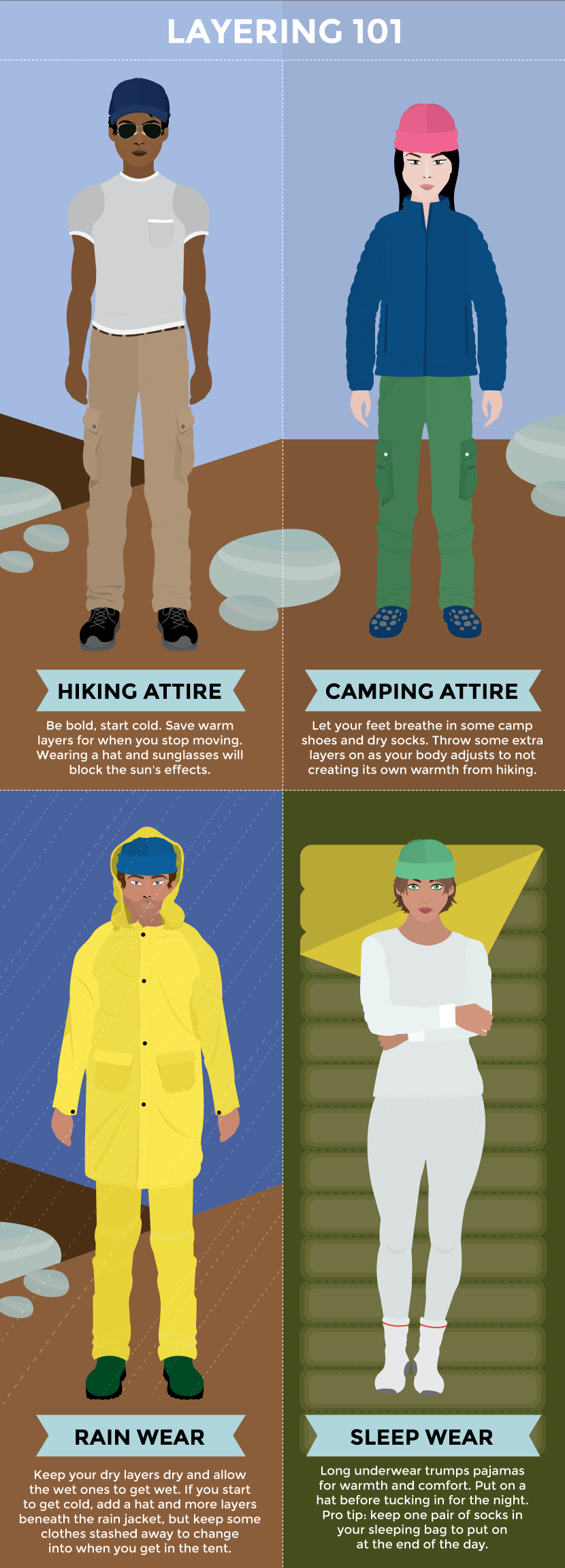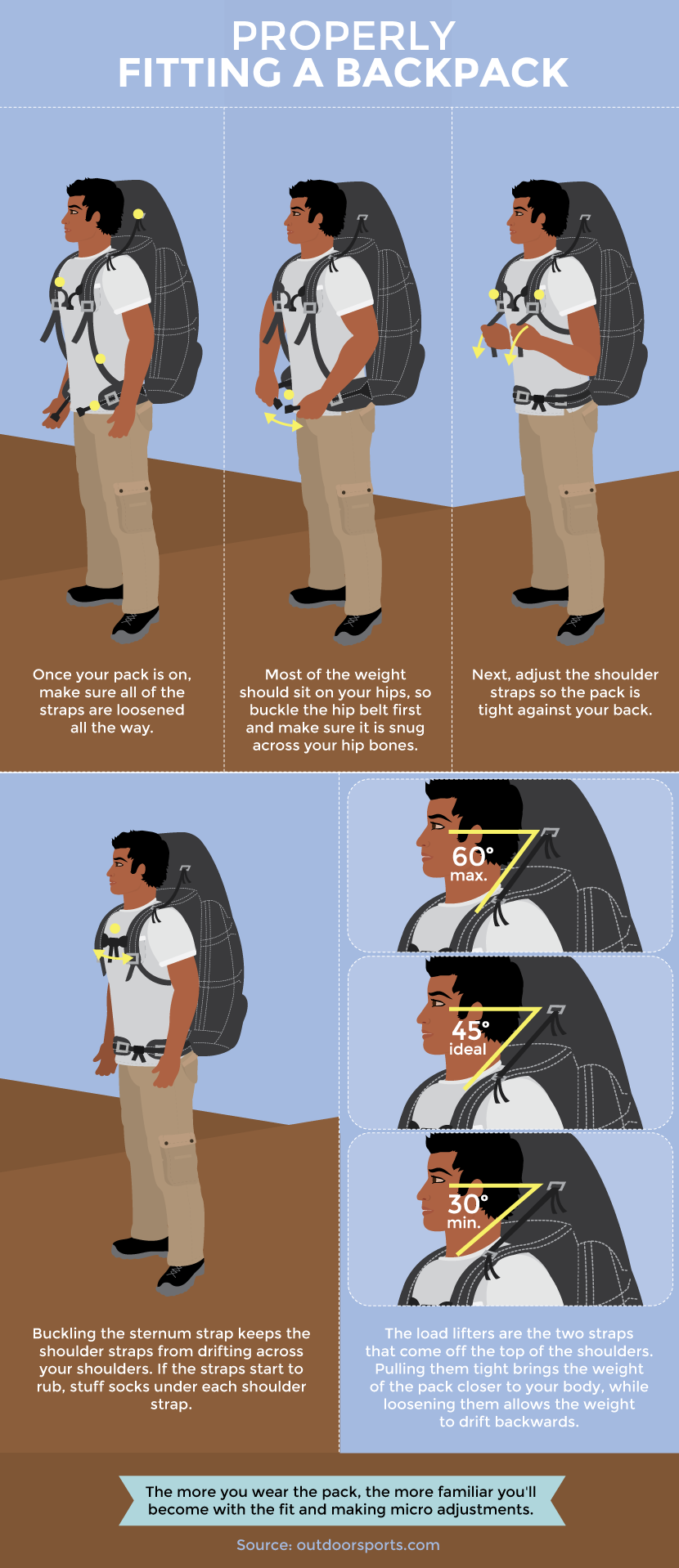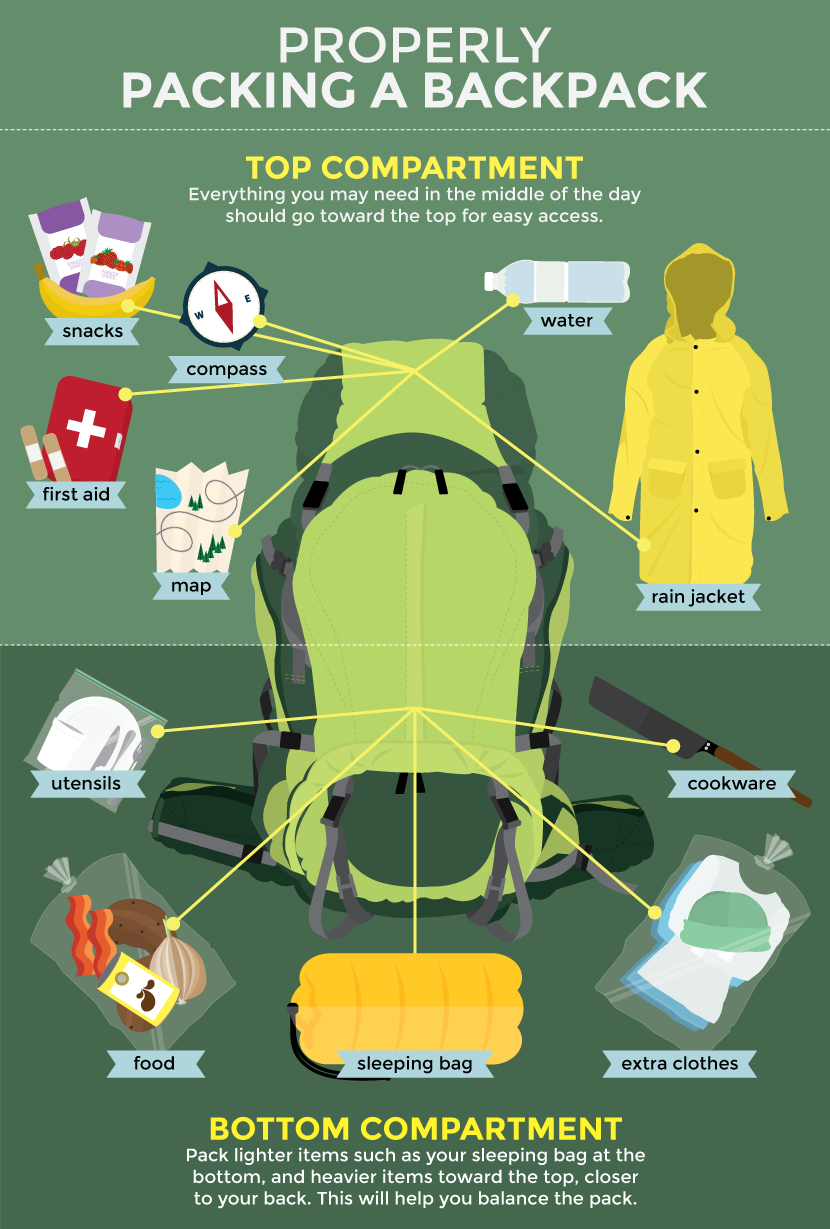How to Pack for Your First Backpacking Trip
Learn the Art of Balance, Compression, and Accessibility!
Packing for a backpacking trip can be a daunting task. How do you know you have everything you need? And, for an added challenge, how do you fit all of that gear into a single pack?
A little bit of planning and careful organization can ensure that your first wilderness experience is a success.
What to Pack
While it’s important to be prepared for a variety of weather conditions and situations, first-time campers often bring too many things, which leads to a heavy pack and tiresome hiking.
Start with what you'll need for each part of the day. Bring a tent, a sleeping bag stuffed into a compression sack, a sleeping pad, and a headlamp for sleeping.
For cooking, make sure you include a stove, fuel, a lighter, a cooking pot, food for each meal, a bowl, and a spoon. Plastic containers with secure lids make great bowls because they can be used to store extra food or to pack snacks for the trail.
Don’t worry about buying a fancy plastic spoon at the outfitter – the metal spoon in your silverware drawer will never break, and it doesn’t retain flavor.
Pack water (two liters is a good start) and a way to purify water in the backcountry – either a filter or purification drops.
If you’re heading into an area that is known as a home for bears, check the region’s food storage requirements. If it’s grizzly country, carry a can of bear spray.
Warm and Dry
Choosing the right clothing is often the hardest part of packing, but the goal is simple: bring layers that will keep you both warm and dry in a range of weather conditions.
It’s easiest to start with the layers you’ll wear when you get out of your car at the trailhead. Then add in layers for warmth: long underwear top and bottoms, a puffy jacket, and a fleece hat.
Next, think about what you’d wear to stay dry in the rain. A rain jacket is usually sufficient because hiking pants often dry quickly, but if you’re headed to an area known for its wet weather, consider packing a good pair of rain pants.
Last, add in some duplicate items: 3–5 pairs of socks, an extra pair of underwear, and a pair of lightweight shoes or sandals to wear around camp. Remember that the more you add, the more you’ll have to carry!

The last things to pull together are miscellaneous, yet often essential items, such as a first-aid kit, maps, and a compass (or GPS). If you’re going to a wilderness area, pack a trowel and hand sanitizer for digging catholes.
If you’re camping in an area with outhouses, remember to bring extra toilet paper.
The weight really starts to add up with extra items – War and Peace probably isn’t the right book to bring on your first backpacking trip.

Packing the Bag
Once you’ve collected everything, it’s time to pack. Over time, you’ll develop a unique packing style that fits your needs and your preferences, but if it’s your first time trying to get everything into a backpack, here are some tips to make it easier.
Start by putting aside everything you may need in the middle of the day (snacks, map/compass, first-aid kit, rain jacket, etc.) These items can go in the top compartment of the pack, where they’ll be readily accessible.
Once that’s done, work from the bottom up, always keeping three things in mind: accessibility, balance, and compression.
Pack things in the order you’ll need them – you don’t want to repack the whole bag halfway through the day because you buried all the food.
Balancing the weight on each side of the pack will make your backpack fit more comfortably and keep you from wobbling down the trail. People usually struggle with compression because it takes some practice.
The idea is to keep your backpack as svelte as possible and to avoid empty pockets of air. Sometimes this requires packing with a little force.

Most backpacks have a separate compartment at the bottom, which is a convenient place to store your sleeping bag for two reasons. First, you can sit on the bottom of the pack, knowing that the sleeping bag won’t be damaged by the weight.
Second, it’s important to have a bulky, lighter-weight item in the bottom of the back for proper balance.
Next, decide how you’re going to keep everything dry. Some people line their bag with a thick trash bag or a lightweight nylon drybag, but another option is to bring a pack cover that wraps around the outside of the bag.
If you choose to line the backpack, place the liner in the bag before adding anything else.
Pack your extra layers – the ones you probably won’t need during the day (socks, underwear, puffy jacket, etc.) above your sleeping bag. Some people prefer to have their extra clothes in a stuff sack to keep them together.
This is personal preference, but the more stuff sacks you pack, the more space you waste – think compression!
A stuff sack, however, is a good way to keep all your food together, and it can be used to hang food at night to keep it safe from wildlife.
Your food should go in next. Be sure to place the food so it sits against your back because this keeps the weight close to your center of balance.
Here are a few more pro tips: pack the tent poles along the inside of the bag but not inside the liner. Try to pack things inside your cookpot to prevent wasted space, and make sure you separate the food from the fuel.
To help fill in dead spaces and cut down on pack weight, take your tent out of its bag and stuff it into the crevices of your pack.
While a few items fit well on the outside of the pack, such as water bottles and fuel, the goal is to get everything else inside. This keep items from getting damaged on the outside of the pack and looks more professional.

The more trips you go on, the more fluid packing will become. Over time, you’ll develop new tricks and techniques that fit your style. Backpacking is an incredible way to access remote areas and stunning vistas.
Don’t be afraid to move on from car camping and venture into the backcountry.
Embed the article on your site

